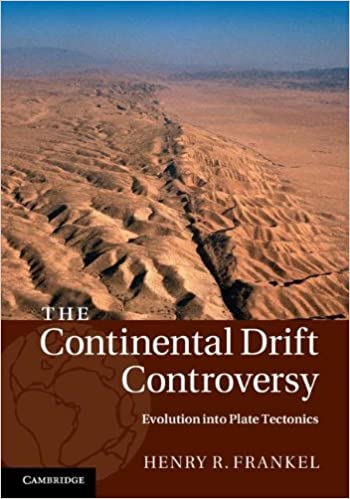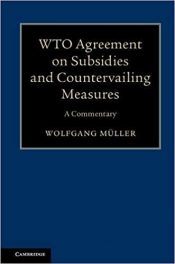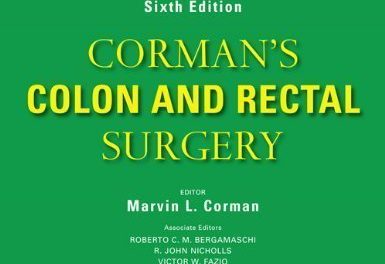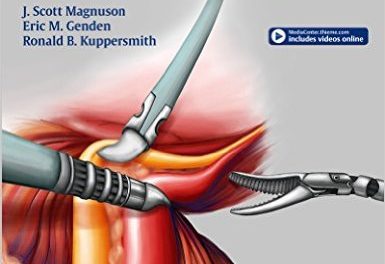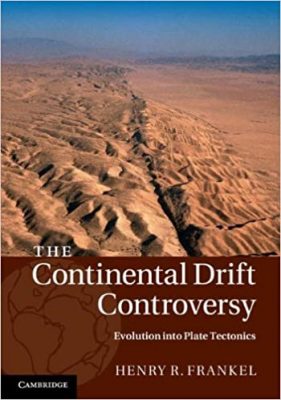 Author: Henry R. Frankel, PhD
Author: Henry R. Frankel, PhD
Publisher: Cambridge University Press – 2,280 pages total
Book Review by: Nano Khilnani
Millions of years ago, there was a single continent on Earth known as Pangaea, consisting of several continents as we know them today (see image). Over many millennia, the continents drifted apart. There were several explanations for such a drift. These were presented and backed up with research undertaken during the decades of the 1920s up to the 1960s.
This book of four volumes discusses the various explanations presented, along with the scientific research that backed them up. We present below the titles of the four volumes, as well as the names of the 30 chapters within these volumes.
Dr. Henry Frankel has gathered all the research conducted by various earth scientists over the decades, has woven them together, and presents them in this compendium. The four books taken together constitute nearly 2,300 pages. This s a lot of information to go through together, but each volume can be acquired separately, to understand what was going on, on this controversy during the period it covers. The four volumes are entitled:
- Volume 1 – Wegener and the Earlier Debate – 604 pages
- Volume 2 – Paleomagnetism and Confirmation of Drift – 525 pages
- Volume 3 – Introduction of Seafloor Spreading – 476 pages
- Volume 4 – Evolution into Plate Tectonics – 675 pages
In the end, one of the several theories presented and discussed worldwide with satisfactory data, and was accepted by the scientists. Which one was it, and why was it accepted? Read the four volumes to learn the answers. You will be pleased to know the answers and explanations.
Volume 1 – Wegener and the Earlier Debate
Introduction
- How the mobilism debate was structured
- Wegener and Taylor develop their theories of continental drift
- Sub-controversies in the drift debate: 1920s to the 1950s
- The mechanism sub-controversy: 1921-1951
- Arthur Holmes and his Theory of Substratum Convection: 1915-1955
- Regionalism and the reception of mobilism: South Africa, India, and South America from the 1920s to the early 1950s
- Regional reception of mobilism in North America: 1920s through the 1950s
- Reception and development of mobilism in Europe: 1920s through the 1950s
- Fixism’s popularity in Australia: 1920s to middle 1960s
Volume 2 – Paleomagnetism and Confirmation of Drift
Introduction
- Geomagnetism and paleomagnetism: 1946 – 1952
- British paleomagnetists begin shifting their research toward testing mobilism: summer 1951 to fall 1953
- Launching the global paleomagnetic test of continental drift: 1954-1956
- Runcorn shifts to mobilism: 1955-1956
- Enlargement and refinement of paleomagnetic support for mobilism: 1956-1960
- Earth expansion enters the mobilist controversy
- Development and criticism of the paleomagnetic case for mobilism: late 1950s and early 1960s
- Major reaction against the paleomagnetic case for mobilism and early work on the radiometric reversal timescale: 1958-1962
Volume 3 – Introduction of Seafloor Spreading
Introduction
- Extension and reception of paleomagnetic / paleoclimatic support for mobilism: 1960-1966
- Reception of the paleomagnetic case for mobilism by several notables: 1957-1965
- Harry Hess develops seafloor spreading
- Another version of seafloor spreading: Robert Dietz
- The Pacific as seen from San Diego and Menard’s changing views about the origin and evolution of the ocean floor
- Fixism and Earth expansion at Lamont Geological Laboratory
Volume 4 – Evolution into Plate Tectonics
Introduction
- Reception of competing views of seafloor evolution, 1961-1962
- The origin of marine magnetic anomalies, 1958-1961
- Disagreements over continental drift, ocean floor evolution, and mantle convection continue: 1963-65
- Further work on the Vine: Matthews hypothesis and development of the data from transform faults, 1964-1965
- Continuing disagreements on the Vine-Matthews hypothesis, transform faults, and seafloor evolution, 1965
- Resolution of the continental drift controversy
- The birth of plate tectonics
Author:
Henry R. Frankel was awarded a PhD from Ohio State University in 1974 and then took a position at the University of Missouri in Kansas City where he became Professor of Philosophy and became Chair of the Philosophy Department from 1990 to 2004.
His interest in the continental drift controversy and the plate tectonics revolution began when he started teaching a course on conceptual issues in science during the late 1970s. The controversy provided him with an example of a recent and major scientific revolution to test philosophical accounts of scientific growth and change.
Over the next thirty years, and with the support of the United States National Science Foundation, the National Endowment for the Humanities, the American Philosophical Society, and his home institution Professor Frankel’s research went on to yield new and fascinating insights into the evolution of the most important theory in the Earth Sciences.

